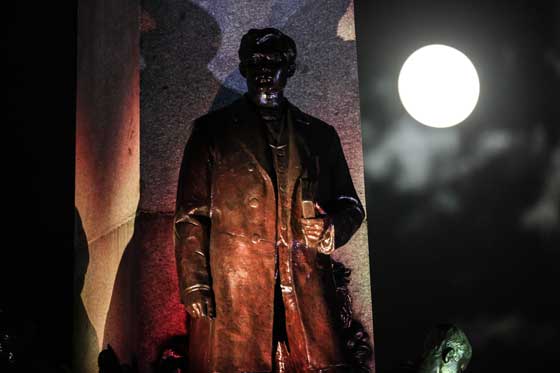People have another chance to see the Earth’s moon up close this December during the last supermoon event of 2016.
“The best time to observe the moon is after 12 a.m. Wednesday (December 14) but before dawn that day while it is still dark,” said Dario de la Cruz, chief of astronomy of the Philippine Atmospheric Geophysical and Astronomical Services Administration, the state weather agency.
Unless cloudy skies prevail, the moon during that period will appear bigger and brighter than usual, de la Cruz said.
The moon then will still be hours away from being a full moon at 8:06 a.m. Wednesday (Philippine Standard Time) but will appear that way due to the celestial body’s more-than-usual nearness to Earth, he said.
The distance of the moon from the Earth then will not be the perigee or nearest, which for this month is 358,564.36 km. at 7:29 a.m. Tuesday (December 13), but will still be enough for a closer view of the celestial body, he pointed out.
Supermoon is the word astrologer Richard Nolle reportedly coined at about 1979 to describe the occurrence of either a new or full moon that is coming within 361,524 km. or 90 percent of its approach to Earth.
The National Aeronautics and Space Administration (NASA) said that at present, the term supermoon already broadly refers to a full moon that is closer than average to Earth.
The moon reaches its perigee and is closer to Earth at certain times as, according to NASA, the former revolves around the latter in an elliptical orbit.
De la Cruz noted that the moon this early Wednesday can still be considered a supermoon since it is already nearing full moon state and is at closer-than-usual distance to Earth.
“For this December, it will be difficult to view the moon at perigee on Tuesday and when it becomes a full moon on Wednesday since both will occur during daytime,” he said.
If the weather is favorable, people can still view the moon’s expected distinct appearance during pre-dawn hours on Wednesday, he said.
According to NASA, a supermoon can be as much as 14 percent bigger and 30 percent brighter than a full moon at its apogee or farthest distance from Earth.
Clouds and glare of urban lights can however mask such increase in the moon’s brightness, NASA said.
This month’s supermoon won’t be as big and bright as it appeared last Nov. 14, de la Cruz clarified.
“The supermoon last month was closer to Earth,” he said.
PAGASA said the moon then was only 356,621.66 km. from Earth, the closest distance since January 26, 1948.
“The moon won’t be seen this close to Earth again until November 26, 2034,” PAGASA said.
Earlier, de la Cruz allayed fears about the occurrence of supermoons, citing the absence of scientific basis supporting beliefs surrounding these events.
“Supermoons are normal astronomical occurrences,” he said.
Except for some above-average tidal rise due to the moon’s closeness to Earth, the occurrence of supermoons has no adverse impact, he said.
Among the beliefs associated with supermoons are the kindling of lunacy among these events’ viewers and the onslaught of long-term problems from altercations during these celestial occurrences.
PNA



